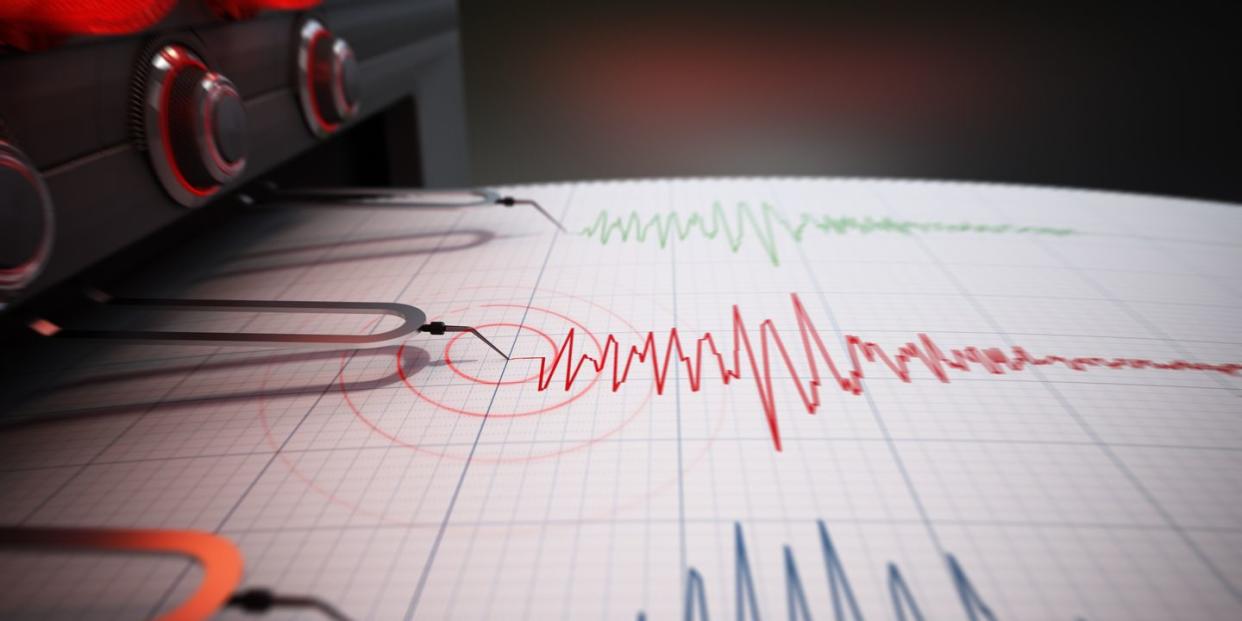Scientists Find Earthquake Precursor That Could Give Us a Two-Hour Warning

Detecting earthquakes is notoriously difficult, as they can occur at any moment.
A new study from researchers at the French National Institute for Sustainable Development used GPS satellites and thousand of geodesic stations to analyze approximately 90 earthquakes above magnitude 7.0.
They found that these earthquakes featured a precursory fault slip phase that could help expand out earthquake warning systems from a few minutes to a couple of hours.
Natural catastrophes are notoriously difficult to predict, both when they’re going to strike and with what intensity. Scientists have honed humanity’s prognosticating abilities for a few varieties—satellites easily track a hurricane’s course as it makes landfall, and NOAA’s Storm Prediction Center helps keep an eye on severe storms. But earthquakes are another story entirely. They can strike day or night, rain or shine, and all the geological action is hidden beneath our feet.
For more than 50 years, scientists have searched for methods that can reliably detect these disastrous acts of nature, and a new study published today in the journal Science is a major step toward realizing that goal. By analyzing GPS time-series data of 90 past earthquakes over magnitude 7.0, Quentin Bletery and Jean-Mathieu Nocquet—two researchers at the University of Côte d'Azur and the French National Institute for Sustainable Development (IRD)—discovered that these earthquakes featured “a precursory phase of fault slip two hours before seismic rupture,” according to their paper.
In other words, they came with a warning signal.
Previous retrospective studies looking at past earthquakes have shown that precursory phases before the mainshock of an earthquake can be observed, but the correlation between these phases and an actual earthquake occurring is pretty weak. These precursory phases can take place pretty frequently and don’t always end in an earthquake.
To find a more reliable data point, Bletery and Nocquet gathered data from 3,026 geodesic stations across the globe and measured the fault displacement two hours before 90 7.0 earthquakes. Statistical analysis revealed that a period of exponential acceleration of fault slip near the center of the earthquake occurred roughly two hours before the main event—a main event which is kicked off by a process known as “earthquake nucleation.” This result shows that many large earthquakes do have a precursory phase, and that this “exponential acceleration” could help give earthquake-prone communities a heads up before a big one hits.
“If it can be confirmed that earthquake nucleation often involves an hours-long precursory phase, and the means can be developed to reliably measure it, a precursor warning could be issued, letting people know that it is time to let go of sharp utensils and get read to “Drop, Cover, and Hold On,” writes Roland Bürgmann, a geologist at UC Berkeley who was not involved in the study, but wrote a perspective article on it. Bürgmann adds that a couple hours isn’t much to mitigate damage, but it could be woven into current earthquake warning systems that currently only provide a few minutes or even mere seconds before an earthquake hits.
Although this pre-slip phase is associated with large earthquakes, it’s still unknown if similar pre-slip movements also serve as precursors to false starts. It’s also possible that this study only reveals the very tail end of a much longer pre-earthquake phase.
For now, earthquakes remains the trickiest natural disaster to predict, but our earthquake soothsaying is improving, as geologists uncover the subtle secrets of the world-shaking movements along Earth’s many fault lines.
You Might Also Like
